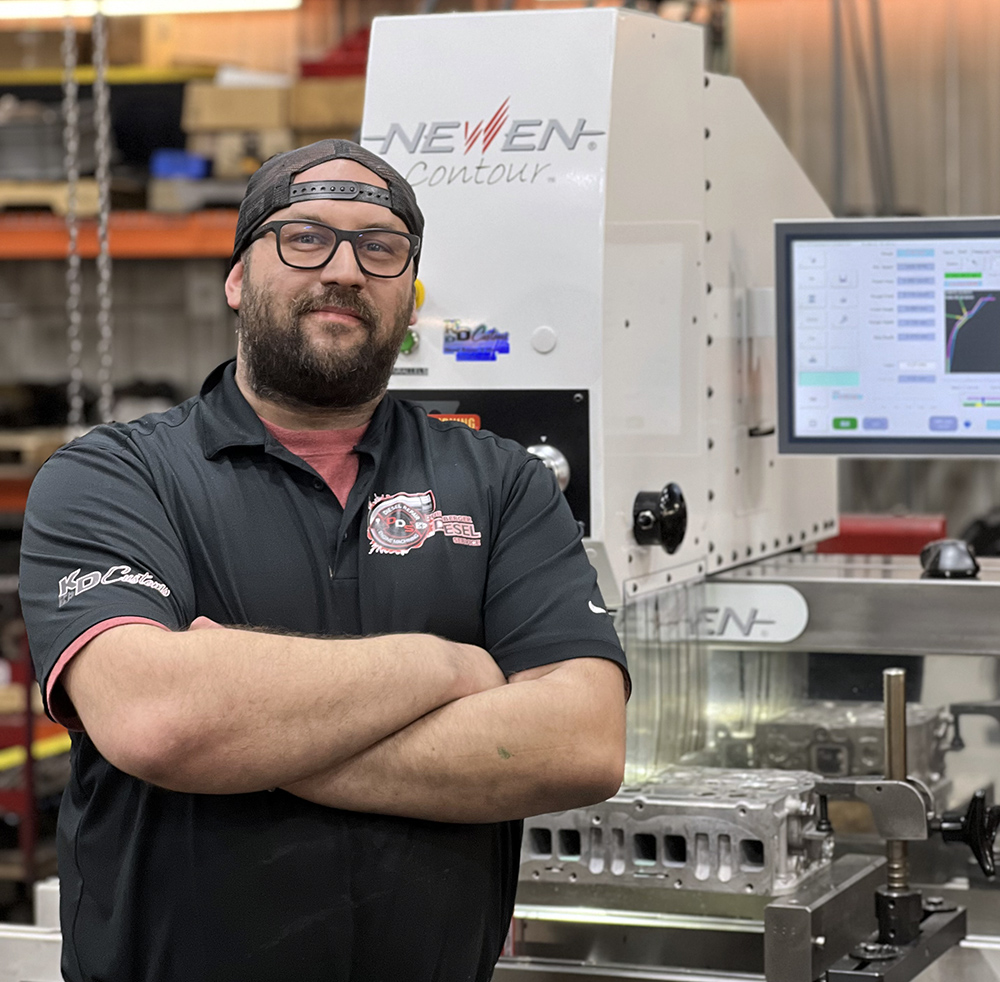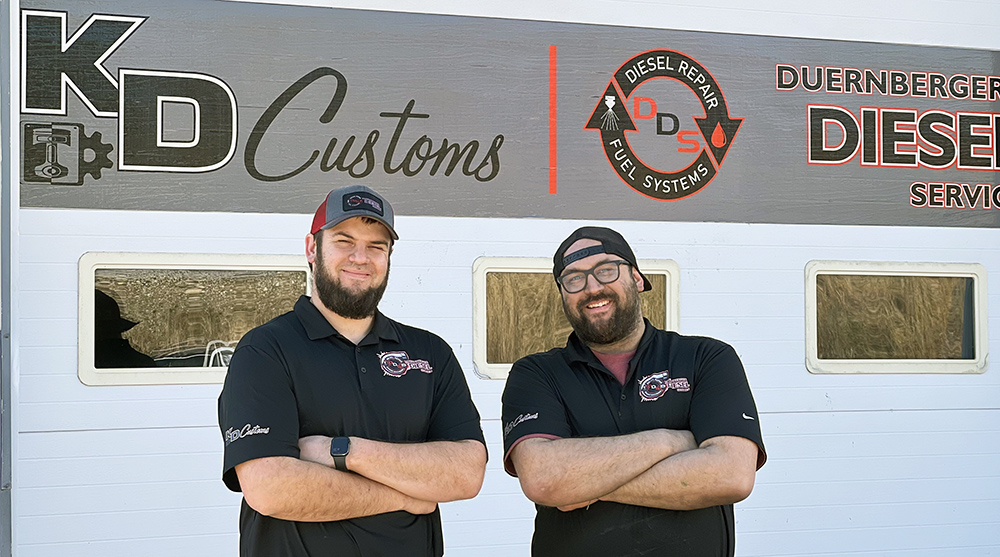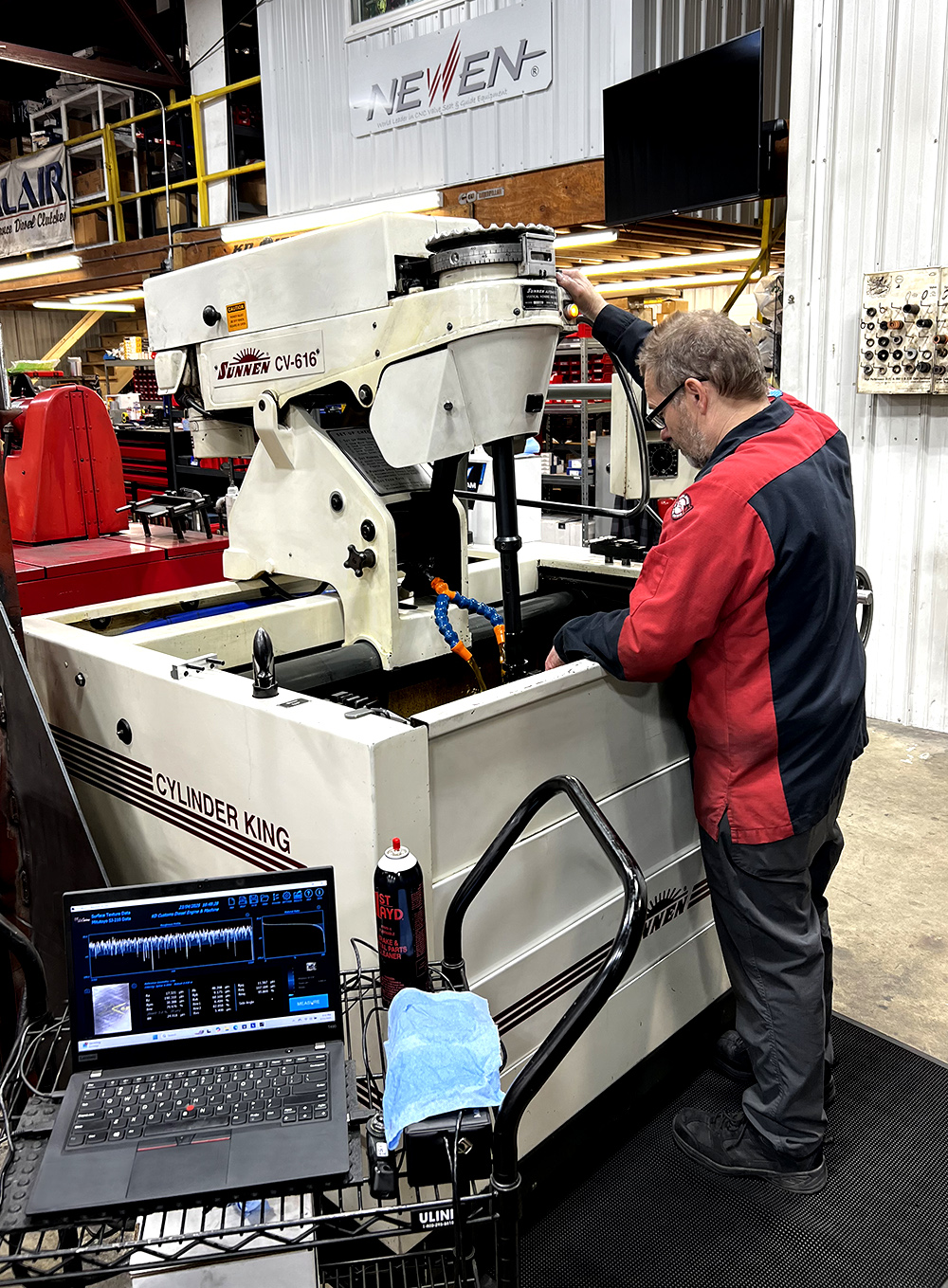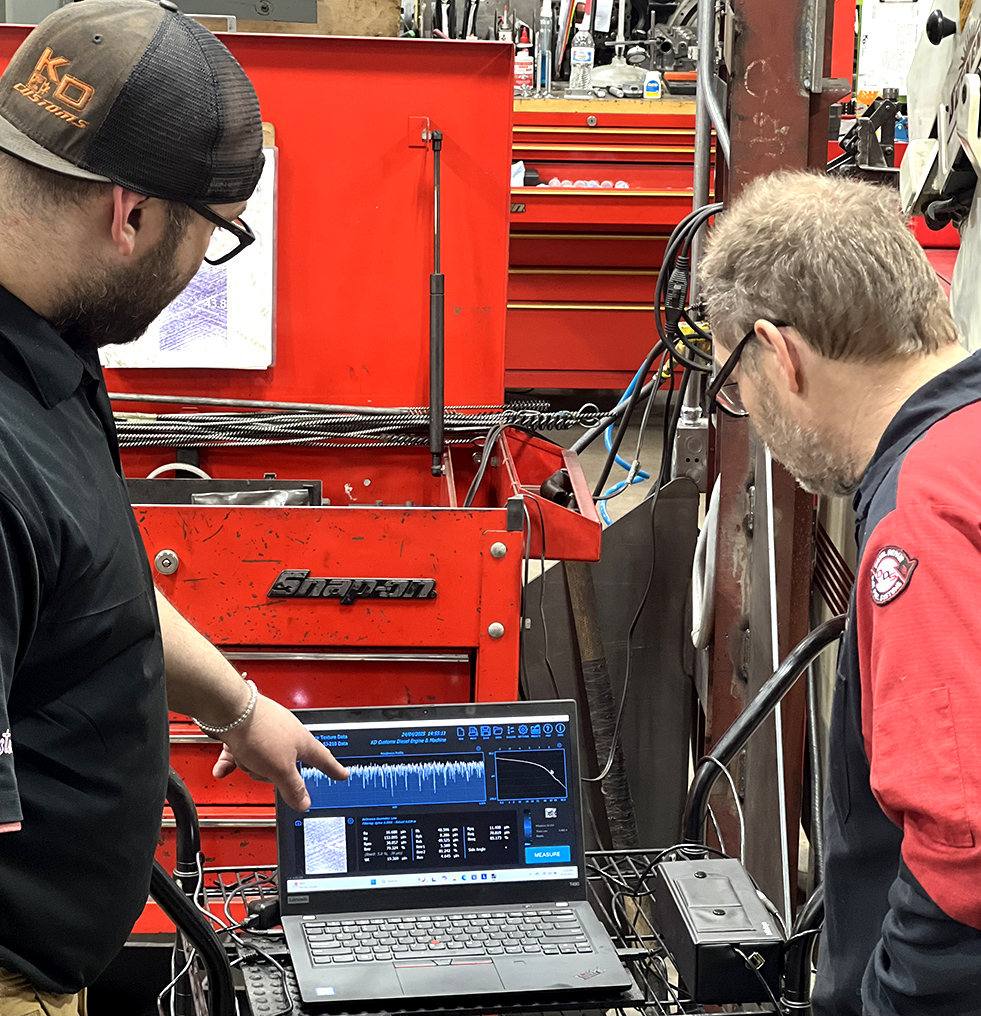We write a lot about how controlling surface roughness can help you find untapped performance. It’s not often, however, that we get to write that it made the difference between a company staying in business or closing!

Kyle Duernberger is the owner of KD Customs, a Wisconsin-based diesel engine machine shop. The company specializes in cylinder heads, remanufactured diesel engines, custom work for agricultural and heavy equipment, pickups, tractor and truck pulls, and projects for hobbyists that love diesel powered vehicles. The company has been highly successful…but as Duernberger tells it, it almost didn’t come to be.
“I was about ready to sell everything,” – Kyle Duernberger, KD Customs
From farm gear to machine shop
Duernberger’s lifelong interest in diesel engines began with working on equipment on a large dairy farm. Through high school and beyond he learned the ropes, working as a mechanic and later in a machine shop. With his brother Eric (who now runs Duernberger Diesel Service, the online sales arm of the company), they went into the rebuilding business.

Engines in queue at the KD Customs facility
When KD Customs first opened, they farmed out a large amount of their engine machining to small businesses in the area. A few years later, the opportunity arose to purchase one of those machine shops, and they decided to risk the large investment to set up an end-to-end business. “If we were going to continue doing engine rebuilds, then I needed to be sure that I had control,” he says. With new gear and a few knowledgeable employees that transferred with the shop, KD Customs began doing their own machining work.
Almost from the start, however, Duernberger knew that things were not quite right: their engines were burning considerable oil. The conventional thinking was that the engines had not been broken in correctly, or that there was a mismatch between the engine type and the honing variables. “We tried changing honing pressures, honing stones, the number of strokes, even honing oil. But without any data, we ran around and chased our tails.”
Most troubling, as Duernberger recalls, “There was an acceptance that ‘this is just how it is.’ Our operators said, ‘We’ve been doing this for 30 years and it’s never been a problem.’” But, he notes, the books they used to set their process variables were based on Rpk and Rk numbers for older oils, older piston rings, older engine block materials, etc. “Every engine machines differently. It’s not a cookie cutter operation,” he says.
In a new shop, with a large investment hanging over their heads, a big backlog of engine work, and an intractable quality issue, Duernberger made the difficult call to halt engine block machining until they could solve the problem. “I was about ready to sell everything,” he says.
Honing operation at KD Customs
A “make-or-break” week
Duernberger had learned about the work that the team at Total Seal was doing with surface texture to improve performance. He arranged to meet with Total Seal, and Scott Diehl came to the KD Customs shop to help out. “Scott said, ‘What are your numbers?’ and I said, ‘I don’t know’,” he recalls.
They quickly bought a profilometer and began tracking their process variables. With this new source of data, Duernberger could see that the way they had always honed— based on process recipes and rules of thumb—was not producing results.
“‘I’ve done it this way for years‘ won’t cut it anymore.“
The challenge, then, became how to make sense of all of the data and put it to use. “We bought every vitrified abrasive stone we could buy, and wrote all of our results down on paper,” he recalls. But while they had readouts on the gage screen, they didn’t have answers. “This is ridiculous,” he thought. “It’s so much work writing it all down,” yet they still were not seeing a solution to the oil burning issue.
TraceBoss+ offers a solution
Things really took off when KD Customs purchased Digital Metrology’s TraceBoss+ analysis software and a USB microscope through Total Seal. With the new system, they could now see the surface texture and crosshatch as well as calculate the parameters. “We got a completely different set of data,” Duernberger says, which contradicted a lot of their long-held honing beliefs. Equally important, they could store and recall the data. Comparing their surfaces to good-performing surfaces, Duernberger says the answer was clear: “Our surfaces didn’t look like that.”
TraceBoss+ on a mobile cart is used throughout the KD Customs shop
The visual tools in TraceBoss+ also showed an issue with the crosshatch angle. Using a traditional angle finder gage to measure crosshatch, “We thought the crosshatch was about 45 degrees.” However, with images from the USB microscope and TraceBoss+, they could see clearly that the angle was closer to 67 degrees. “We were pumping oil!” he said.
KD made the decision to follow the data. They converted to super abrasives, reduced their process from five operations to three, and made a number of other changes. Their long-time hone operator was skeptical of these seemingly counterintuitive moves. But as Duernberger recalls, “The minute we started honing that way, we got deep valleys, controlled peaks, and good Rk values.” Maybe the doors could stay open after all!
“Our surfaces didn’t look like that.”
The first block that the company honed and delivered, “Now has hundreds of thousands of miles on it—and not a drop of oil,” says Duernberger. The machine shop was back in business.
Ongoing Improvement
One major advantage of TraceBoss+ is that it allows you to recall previous measurement data to improve current machining. Before TraceBoss+, Duernberger says, “We had written hundreds of documents” on rebuild jobs—but without a system to recall them they were just paper in a drawer. With TraceBoss+, he says, “We can now go back to history” and use the learned knowledge to improve processes.
TraceBoss+ lets KD Customs see surface texture and crosshatch, and to use past data to improve current processes.
KD’s hone operator is also now on board with using data to drive the honing process. Duernberger says, “Now it’s part of every block we hone. He’s self-sufficient: he hones, checks bores, and makes adjustments based on the data.” TraceBoss+, says Duernberger, is now as invaluable tool to the shop. “The data that you helped me capture and organize has changed my program. I’d be blind without it.”
The software also makes it easier for Duernberger to communicate with customers. When they rework an engine now, “We show the customer, ‘This is what your cylinder finish is,’ and we can explain why it will work. We give him a picture and some numbers and it’s easily understood.”
“The data you helped me capture and organize has changed my program. I’d be blind without it.”
KD now uses TraceBoss+ throughout the shop, measuring valve seats, head decks, and other machined surfaces in addition to cylinder finish.
Duernberger says that the shop is committed to improving, and TraceBoss+ is a key part of it. “We’re still learning with every block we work on, and with every piece of data we understand more clearly.” He notes that a lot of shops have adopted a data-based approach, but many still rely on rules of thumb and tribal knowledge. But for KD Customs, seeing the data, and seeing the results, has made all the difference—and kept the lights on.

Eric and Kyle Duernberger



